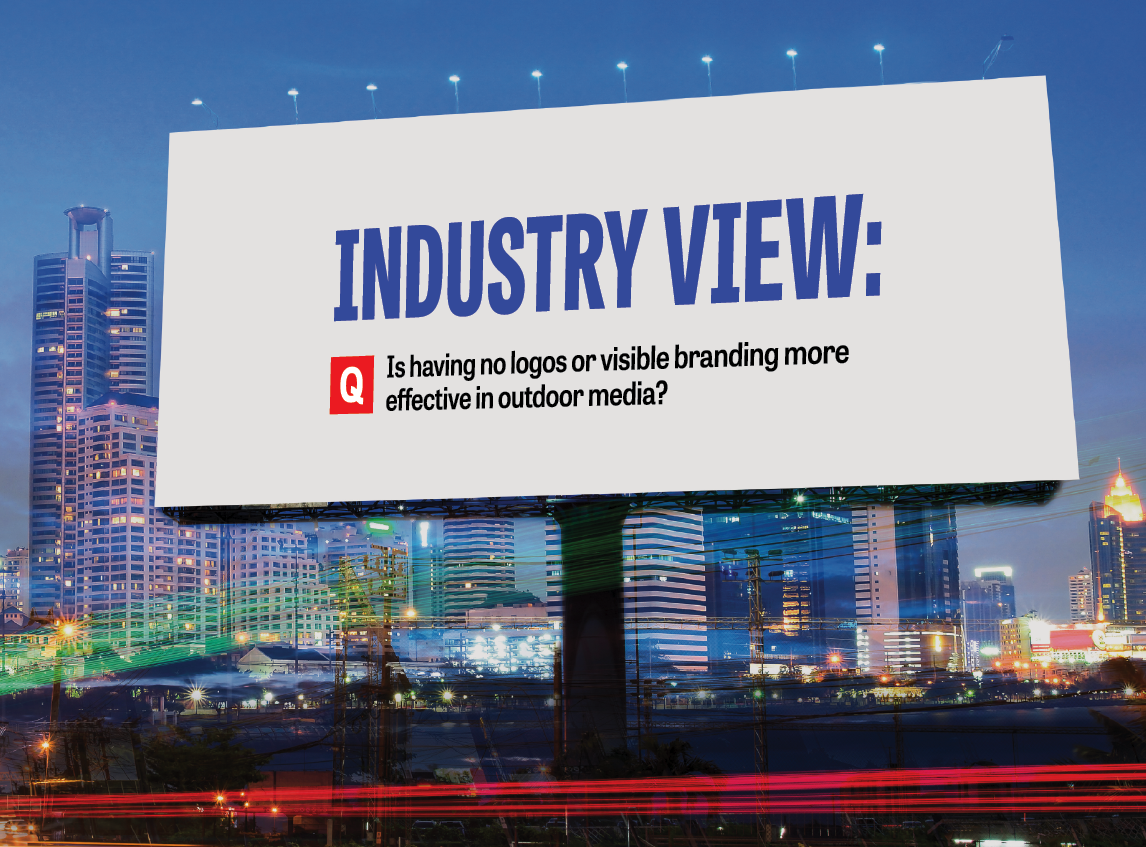
For Campaign Middle East’s October issue, we reached out to a cross-section of industry experts to ask them one question.
Is having no logos or visible branding more effective in outdoor media?
Now, if you’ve seen this billboard or this one on Sheikh Zayed Road in Dubai this year, the question will definitely make sense.
Opinions were definitely divided as the replies we received varied across the board with different reasonings to boot.
Here’s the first part of all the replies we received.
 Beverley D’Cruz
Beverley D’Cruz
General Manager, Pizza Hut, Middle East and Pakistan
No
Most brands do not have the brand recall it would need to not have a logo on the outdoor.
Brand recall and visual identity take a long time to build. It happens with consistency, outdoor presence and investment in brand building.
Well-known brands with strong recognition may occasionally experiment with logo-free advertising, relying on visual cues or distinctive elements associated with their brands to engage the audience.
These visual cues however have been built over a period.
Visual cues are a colour for example…red shouts Coca Cola and purple Cadbury. Other visual cues can be symbols such as the iconic swoosh for Nike or brand ambassadors/characters but each of these is built over time.

Viral Patel
Head of Digital, Stellantis Middle East and Africa
Yes
Indeed, having no logos or visible branding can prove to be more effective in outdoor media, depending on the brand’s ultimate goal.
This minimalist approach allows the message to take centre stage without distractions, facilitating quick comprehension, especially in high-speed environments with its uncluttered visuals.
I believe it also generates a sense of curiosity, prompting viewers to seek additional information, potentially boosting engagement.
Having said this, the effectiveness of this strategy leans significantly on a brand’s recognition, as visible branding may still be necessary in some instances to convey vital information and establish brand recall.
In summary, while logos and branding have their roles, established brands strategically embracing minimalism in outdoor advertising can undoubtedly enhance message clarity and effectiveness.
 Anne Tulloch
Anne Tulloch
Group Marketing Communications Director, Alshaya
Yes
For brands to cut through in a very cluttered advertising market and effectively connect with their consumer the ‘sticky assets’ of a brand are incredibly important.
Sticky assets are those traits that are synonymous with the brand – of course, this can be the logo, but also shapes, colours and sounds are part of the experience that all enable a consumer to link the communication with the specific brand.
For some brands the sticky assets are so strong that indeed the actual brand logo is not always necessarily which we have seen recently in the OOH advertising on SZR Dubai.
However, the use of a brand’s sticky assets to link the brand and consumer is not limited to one specific media channel such as OOH – the principle can be applied across any relevant media channel that connects the brand with the consumer.
 Henrietta Shakespeare
Henrietta Shakespeare
Executive Growth & Operations Director, Viola Outdoor
Maybe
No-logo creative is not a new trend, but it is the privilege of a very few.
That’s not to say that brands can’t be subtle and playful in the use of their logos, but ultimately this only really works if there’s already strong brand recognition and fidelity.
It’s an approach that needs to be earned, that’s clear when you see this tactic mainly being used by brands that have been advertising for decades.
After all, consumers must guess the brand based on obvious and yet not-so-obvious brand cues. Fundamentally, it lies in the confidence of the brand and what success means for an experimental approach like this.
 Ahmed Emam
Ahmed Emam
Chief Sales Officer, BackLite Media
No
In general, it is crucial to have your logo and brand displayed in Out of Home (OOH) formats. OOH serves as the ultimate brand builder, so why compromise its impact by removing your branding?
Only when your brand recall is at its peak should you consider removing your branding, a move that can enhance focus and engagement, and reinforce your brand.
Renowned brands like McDonald’s and LEGO occasionally conceal their logos, relying on creative content when their brand recall is strong, engaging customers in a mental game.
However, in most cases, they prominently display their logos, like the iconic “M” arch currently gracing Sheikh Zayed Road, establishing a landmark.
There is no one-size-fits-all approach, so let’s assume your brand awareness is at its peak.









